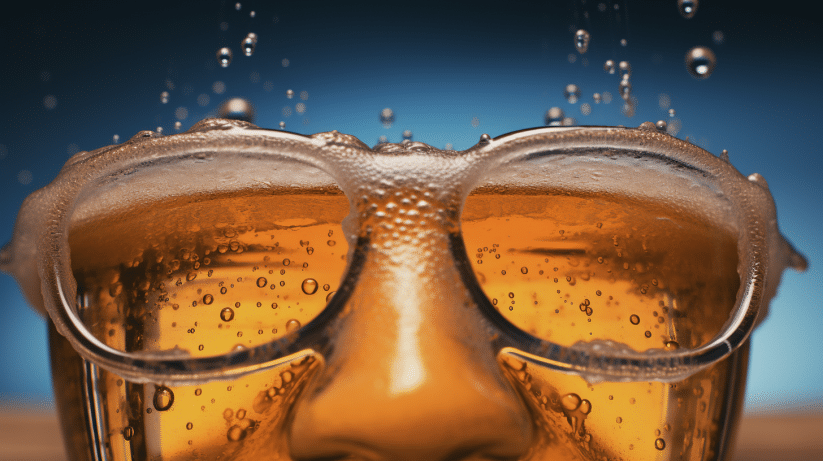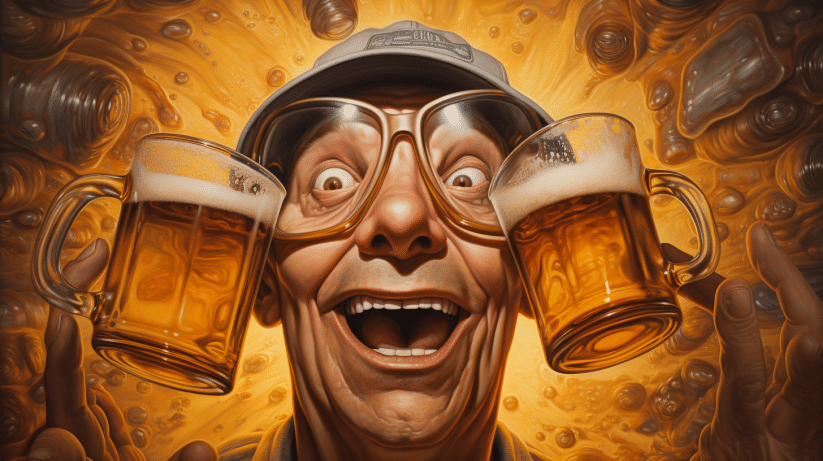Researchers studied if drinking alcohol makes people rate others as more attractive, which is sometimes called the “beer goggles effect”.
They had male friends who regularly drink together rate attractiveness of photos after drinking alcohol vs. a non-alcoholic drink.
Drinking didn’t affect attractiveness ratings of the photos.
But when asked to pick people from the photos to interact with in a future study, those who drank alcohol chose more attractive photos.
So alcohol may not alter perceptions of attractiveness overall, but may make people more likely to approach attractive others socially.
Key Facts:
- 36 male friends (21-27 years old) who drink regularly participated.
- In one session they drank alcohol, another time a non-alcoholic drink, in randomized order.
- They rated attractiveness of photos of people after drinking. Photos varied in expression and movement.
- Drinking didn’t affect attractiveness ratings of the photos.
- When asked to pick people to interact with in a future study, those who drank alcohol chose more highly attractive photos.
Source: Journal of Studies on Alcohol and Drugs, 84(4), 598–604 (2023).
The Draw of Social Drinking
For many people, drinking alcohol is a social activity.
Bars, parties, and casual get-togethers often involve drinking.
Some research suggests that alcohol may actually enhance social experiences.
How so? Alcohol is thought to reduce worries about being rejected socially.
This may make people less inhibited and more likely to approach others socially when drinking.
But does alcohol really change how appealing we perceive others to be socially?
This is sometimes called the “beer goggles effect” – the idea that alcohol makes people look more attractive.
Researchers decided to put this idea to the test in a controlled lab experiment.
Testing the “Beer Goggles Effect”
The researchers recruited 36 male friends ages 21-27 who drink regularly.

They had each friend bring along another male friend who they drink with often.
The friends came into the lab for two sessions on different days.
In one session they drank an alcoholic beverage. In the other session they drank a non-alcoholic beverage.
The order of alcoholic vs. non-alcoholic sessions was randomized.
The friends sat together as they consumed their assigned drinks over 30 minutes. Then, they did tasks on a computer.
They were shown photos of male and female faces of people the same age as them.
The photos varied in expression (neutral or smiling) and movement (static photo or video clip).
The friends rated the attractiveness of each photo on a 1-10 scale after viewing it briefly.
The researchers tested whether alcohol affected the attractiveness ratings, compared to the non-alcoholic drink session.
Does Drinking Really Make Faces Look More Attractive?
Surprisingly, drinking alcohol did not affect the attractiveness ratings overall.
Friends gave similar average ratings of the photos after drinking alcohol vs. the non-alcoholic beverage.
Aspects of the photos like whether they were smiling or moving also did not influence this.
And attractiveness ratings were similar regardless of whether the person in the photo had consumed alcohol or not.
So contrary to the “beer goggles” idea, alcohol did not alter perceptions of attractiveness in general in this controlled lab experiment.
Picking Social Partners Under the Influence
After rating attractiveness of all photos, the friends did one more task.
They were told to pick 4 people from the photos whom they would be interested in interacting with in a future study.
This time, alcohol did have an effect.
Friends who had consumed alcohol were more likely to select the most highly attractive faces to potentially interact with.
So even though drinking didn’t change attractiveness judgements overall, it did make people more inclined to approach the most attractive people socially.
Alcohol, Attraction, and Social Motivation
These results suggest alcohol may enhance social motivation more than social perceptions.
Drinking didn’t change how attractive photos seemed on average.
But it did make people more open to approaching attractive individuals socially.
Researchers think this is because alcohol reduces worries about being rejected. Being rejected is a key social anxiety.
Concerns about rejection can inhibit people from approaching desirable partners. But inhibition is lowered when drinking.
So alcohol may not actually make others appear more attractive per se.
But it may give drinkers “liquid courage” to approach attractive people they may otherwise hesitate to interact with sober.
This effect has implications for understanding alcohol’s role in social contexts and risky sexual behavior.
Approaching highly attractive individuals more often when drinking may increase social rewards from drinking.
But it could also increase risky sexual situations while intoxicated.
More research is still needed to understand these complex social and motivational effects of alcohol.
But this study took an important step toward teasing apart alcohol’s nuanced influences on social perceptions vs. behaviors.
The all-male sample of friends was a limitation, so including women and non-friends would be informative.
And real-world social interaction studies could build on these lab findings.
But the alcohol-fueled drive to approach attractive others shines new light on alcohol’s rewarding yet potentially hazardous effects in social contexts.
Understanding these complex psychosocial processes could better inform both treatment approaches and drinkers making choices about their alcohol use.
References
- Study: Beer Goggles or Liquid Courage? Alcohol, Attractiveness Perceptions, and Partner Selection Among Men
- Authors: Molly A. Bowdring & Michael A. Sayette







